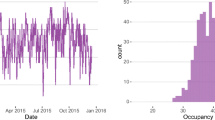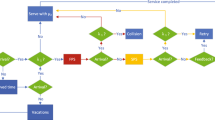Abstract.
We derive performance measures for burst arrival (e.g. messages of variable length packets) M K/G/1 queues with server vacations, controlled by the, so called, Randomly Timed Gated (RTG) protocol, operating as follows: Whenever the server returns from a (general-type) vacation and initiates a busy period, a Timer with random duration T is activated. If the server empties the queue before time T, he leaves for another vacation. Otherwise (i.e. if there are still customers (packets) in the system when the timer expires), two versions of terminating the busy period, each leading to a different model, are studied: (i). The server completes service (e.g. transmission) only to the customer being served at time T and leaves. (ii). The server leaves immediately. We derive both state-dependent and steady-state performance measures as a function of the (vacation-type dependent variable) number of customers present at the initiation of a busy period. When the vacation policy is specified (i.e. Multiple or Single), we obtain explicit formulas for the various performance measures, derive the distribution and mean of the waiting and sojourn times of a customer, and compare between the two versions. Analysis of the conditions for stability concludes the paper.
Similar content being viewed by others
Author information
Authors and Affiliations
Additional information
Manuscript received: May 1999/Final version received: October 2000
Rights and permissions
About this article
Cite this article
Shomrony, M., Yechiali, U. Burst arrival queues with server vacations and random timers. Mathematical Methods of OR 53, 117–146 (2001). https://doi.org/10.1007/s001860000107
Issue Date:
DOI: https://doi.org/10.1007/s001860000107




